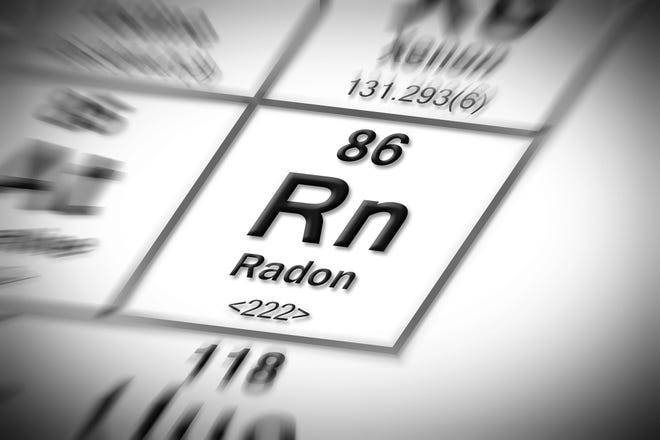What is Radon and Why is Regular Testing Important?
Amanda ObozaGreater Lansing Association of REALTORS®

If you’re in the process of purchasing a home and are wondering if you should have the property tested for radon during the inspection, the answer is yes. But radon testing is not a one-and-done practice. Regardless of whether your property passes or fails during the initial inspection, follow-up testing is critical.
What is radon?
Radon is a colorless, odorless gas that is produced by decaying uranium. It’s present in nearly all soils and, according to the American Cancer Society, very low levels of radon are found in the air we breathe every day.
While we are constantly exposed to radon, serious health issues can arise when this radioactive gas is trapped indoors. Radon is the leading cause of lung cancer for non-smokers, making it the second leading cause of lung cancer in the U.S. The Environmental Protection Agency (EPA) estimates that lung cancer caused by radon exposure kills approximately 21,000 Americans every year.
High levels of radon are found in every state across the country, in every type of home or building, regardless of age or whether it has a basement. The Radon Act 51, passed by Congress in 1987, set the target for indoor radon levels at 4 pCi/L. According to the EPA, two-thirds of American homes exceed that number.
When should testing be done?
As mentioned, it’s recommended that radon testing be done during the home inspection phase of a real estate transaction. While it’s not part of a standard home inspection, it is typically available as an add-on for around $100.
“The problem is that even if buyers pay for a radon test during the home inspection, they don’t always pursue further testing,” said Salina Murton, certified radon inspector with Accurate Inspections, LLC. “A one-time test is great for knowing radon levels in your home at a particular point, but radon is constantly in motion and levels can vary over time.”
You’ll find many recommendations online regarding the frequency of radon testing. For instance, the change of seasons can drastically affect levels, so it’s advised that homeowners test in alternating seasons. It is also suggested that homeowners test for radon whenever there is seismic activity, like an earthquake, or anytime there is new construction or major groundwork happening near your home. Get the News Alerts newsletter in your inbox.
Get alerted to the latest stories to stay on top of the news.Delivery: VariesYour Email
The EPA also says, “if you are planning any major structural renovations, such as converting an unfinished basement area into living space, it is especially important to test the area for radon before you begin the renovation. If your test results indicate a radon problem, radon-resistant techniques can be inexpensively included as part of the renovation.” The agency also suggests testing again once the work is complete.
While screening during these times is advised, Murton says homeowners should test every 2-3 years, regardless of these factors. And she says to remember that testing is individualized, and results can differ substantially from house-to-house.
“There is a common misconception that if your neighbor’s house has low levels then your home must be fine, but it really depends on the way each house interacts with the surrounding soil,” she said. “Our family experienced this firsthand…our neighbor had low radon levels, while our test came back high.”
What happens during a radon test?
Homeowners can purchase a testing kit online or at a local home improvement store. However, if you are uncomfortable testing on your own, or would like to confirm the results of a home test, consider hiring a professional. Murton says the process is relatively simple.
“We set up an electronic testing device in the lowest possible living area of the home, typically the basement,” she said. “It’s best if the homeowner can close up all windows and doors throughout the level for a few days prior to testing in order to get an accurate reading.”
The testing device is placed at least 24 inches away from an exterior wall and set on a ladder to keep it off the ground. The device is left for 48 hours and, during that time, it samples the air once every hour. When the test is complete, a report is generated that provides an hour-by-hour look at radon levels in the home and then calculates the average.
“If the average falls at or above the EPA’s recommended level, the problem can be taken care of by installing a mitigation system, which helps to expel the gas from your home to keep concentrations low,” said Murton. “These systems can run anywhere from $550 to $1,000, maybe a bit more, depending on the application and the home’s square footage.”
This brings up another common misconception…that once a mitigation system is installed, there is no need for further testing.
“Similar to a furnace or chimney, your remediation system may need some occasional maintenance,” said Murton. “Testing every few years helps ensure the system is working properly and that levels remain low.”
For more information on radon, visit the Michigan Department of Environmental Quality Indoor Radon Program website at www.michigan.gov/deqradon. You can also contact the program at radon@michigan.gov or by telephone at 800-RADONGAS.
If you need to schedule radon testing and want to speak with an experienced home inspector, visit the Greater Lansing Association of REALTORS® website at www.lansing-realestate.com for a list of area service providers.
Share This

